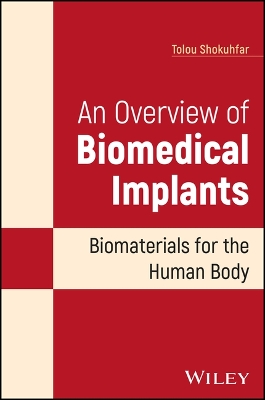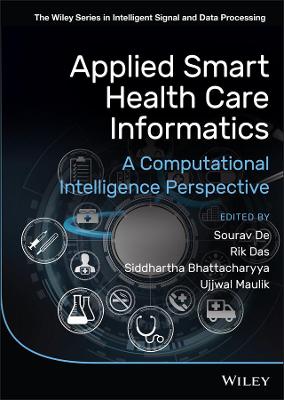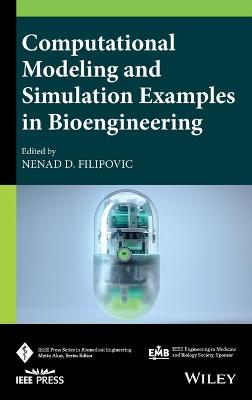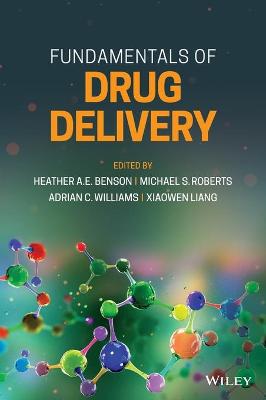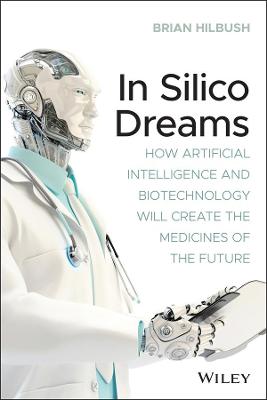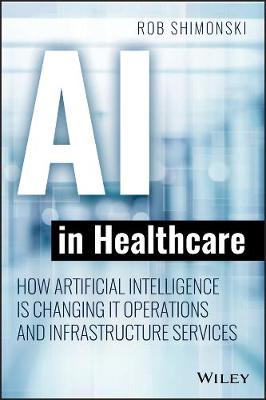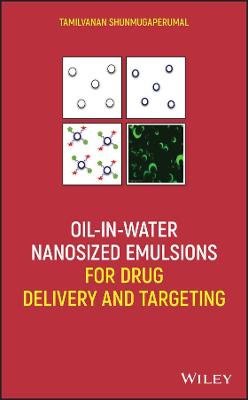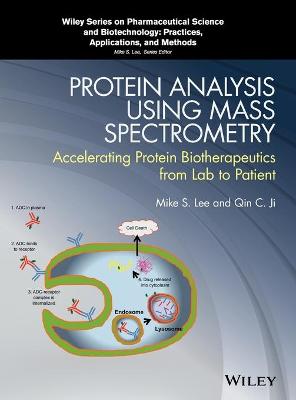Advanced Surfaces for Stem Cell Research
 -15%
portes grátis
-15%
portes grátis
Advanced Surfaces for Stem Cell Research
Uzun, Lokman; Garipcan, Bora; Tiwari, Ashutosh
John Wiley & Sons Inc
12/2016
480
Dura
Inglês
9781119242505
15 a 20 dias
752
1 Extracellular Matrix Proteins for Stem Cell Fate 1
Betuel Celebi-Saltik
1.1 Human Stem Cells, Sources, and Niches 2
1.2 Role of Extrinsic and Intrinsic Factors 5
1.2.1 Shape 5
1.2.2 Topography Regulates Cell Fate 6
1.2.3 Stiffness and Stress 6
1.2.4 Integrins 7
1.2.5 Signaling via Integrins 9
1.3 Extracellular Matrix of the Mesenchyme: Human Bone Marrow 11
1.4 Biomimetic Peptides as Extracellular Matrix Proteins 13
References 15
2 The Superficial Mechanical and Physical Properties of Matrix Microenvironment as Stem Cell Fate Regulator 23
Mohsen Shahrousvand, Gity Mir Mohamad Sadeghi and Ali Salimi
2.1 Introduction 24
2.2 Fabrication of the Microenvironments with Different Properties in Surfaces 25
2.3 Effects of Surface Topography on Stem Cell Behaviors 28
2.4 Role of Substrate Stiffness and Elasticity of Matrix on Cell Culture 31
2.5 Stem Cell Fate Induced by Matrix Stiffness and Its Mechanism 32
2.6 Competition/Compliance between Matrix Stiffness and Other Signals and Their Effect on Stem Cells Fate 33
2.7 Effects of Matrix Stiffness on Stem Cells in Two Dimensions versus Three Dimensions 34
2.8 Effects of External Mechanical Cues on Stem Cell Fate from Surface Interactions Perspective 34
2.9 Conclusions 35
Acknowledgments 36
References 36
3 Effects of Mechanotransduction on Stem Cell Behavior 43
Bahar Bilgen and Sedat Odabas
3.1 Introduction 43
3.2 The Concept of Mechanotransduction 45
3.3 The Mechanical Cues of Cell Differentiation and Tissue Formation on the Basis of Mechanotransduction 46
3.4 Mechanotransduction via External Forces 47
3.4.1 Mechanotransduction via Bioreactors 48
3.4.2 Mechanotransduction via Particle-based Systems 51
3.4.3 Mechanotransduction via Other External Forces 53
3.5 Mechanotransduction via Bioinspired Materials 54
3.6 Future Remarks and Conclusion 54
Declaration of Interest 55
References 55
4 Modulation of Stem Cells Behavior Through Bioactive Surfaces 65
Eduardo D. Gomes, Rita C. Assuncao-Silva, Nuno Sousax, Nuno A. Silva and Antonio J. Salgado
4.1 Lithography 66
4.2 Micro and Nanopatterning 70
4.3 Microfluidics 71
4.4 Electrospinning 71
4.5 Bottom-up/Top-down Approaches 74
4.6 Substrates Chemical Modifications 75
4.6.1 Biomolecules Coatings 76
4.6.2 Peptide Grafting 77
4.7 Conclusion 78
References 79
Contents vii
5 Influence of Controlled Micro- and Nanoengineered Environments on Stem Cell Fate 85
Anna Lagunas, David Caballero and Josep Samitier
5.1 Introduction to Engineered Environments for the Control of Stem Cell Differentiation 86
5.1.1 Stem Cells Niche In Vivo: A Highly Dynamic and Complex Environment 86
5.1.2 Mimicking the Stem Cells Niche In Vitro: Engineered Biomaterials 88
5.2 Mechanoregulation of Stem Cell Fate 89
5.2.1 From In Vivo to In Vitro: Influence of the Mechanical Environment on Stem Cell Fate 89
5.2.2 Regulation of Stem Cell Fate by Surface Roughness 90
5.2.3 Control of Stem Cell Differentiation by Micro- and Nanotopographic Surfaces 92
5.2.4 Physical Gradients for Regulating Stem Cell Fate 96
5.3 Controlled Surface Immobilization of Biochemical Stimuli for Stem Cell Differentiation 100
5.3.1 Micro- and Nanopatterned Surfaces: Effect of Geometrical Constraint and Ligand Presentation at the Nanoscale 100
5.3.2 Biochemical Gradients for Stem Cell Differentiation 107
5.4 Three-dimensional Micro- and Nanoengineered Environments for Stem Cell Differentiation 112
5.4.1 Three-dimensional Mechanoregulation of Stem Cell Fate 113
5.4.2 Three-dimensional Biochemical Patterns for Stem Cell Differentiation 119
5.5 Conclusions and Future Perspectives 122
References 122
6 Recent Advances in Nanostructured Polymeric Surface: Challenges and Frontiers in Stem Cells 141
Ilaria Armentano, Samantha Mattioli, Francesco Morena, Chiara Argentati, Sabata Martino, Luigi Torre and Jose Maria Kenny
6.1 Introduction 142
6.2 Nanostructured Surface 144
6.3 Stem Cell 146
6.4 Stem Cell/Surface Interaction 147
6.5 Microscopic Techniques Used in Estimating Stem Cell/Surface 148
6.5.1 Fluorescence Microscopy 148
6.5.2 Electron Microscopy 149
6.5.3 Atomic Force Microscopy 153
6.5.3.1 Instrument 154
6.5.3.2 Cell Nanomechanical Motion 156
6.5.3.3 Mechanical Properties 156
6.6 Conclusions and Future Perspectives 158
References 158
7 Laser Surface Modification Techniques and Stem Cells Applications 165
Cagri Kaan Akkan
7.1 Introduction 166
7.2 Fundamental Laser Optics for Surface Structuring 166
7.2.1 Definitive Facts for Laser Surface Structuring 167
7.2.1.1 Absorptivity and Reflectivity of the Laser Beam by the Material Surface 167
7.2.1.2 Effect of the Incoming Laser Light Polarization 168
7.2.1.3 Operation Mode of the Laser 169
7.2.1.4 Beam Quality Factor 170
7.2.1.5 Laser Pulse Energy/Power 171
7.2.2 Ablation by Laser Pulses 172
7.2.2.1 Focusing the Laser Beam 172
7.2.2.2 Ablation Regime 173
7.3 Methods for Laser Surface Structuring 174
7.3.1 Physical Surface Modifications by Lasers 174
7.3.1.1 Direct Structuring 175
7.3.1.2 Beam Shaping Optics 177
7.3.1.3 Direct Laser Interference Patterning 180
7.3.2 Chemical Surface Modification by Lasers 181
7.3.2.1 Pulsed Laser Deposition 181
7.3.2.2 Laser Surface Alloying 184
7.3.2.3 Laser Surface Oxidation and Nitriding 186
7.4 Stem Cells and Laser-Modified Surfaces 187
7.5 Conclusions 191
References 192
8 Plasma Polymer Deposition: A Versatile Tool for Stem Cell Research 197
M. N. Macgregor-Ramiasa and K. Vasilev
8.1 Introduction 197
8.2 The Principle and Physics of Plasma Methods for Surface Modification 199
8.2.1 Plasma Sputtering, Etching an Implantation 200
8.2.2 Plasma Polymer Deposition 201
8.3 Surface Properties Influencing Stem Cell Fate 202
8.3.1 Plasma Methods for Tailored Surface Chemistry 203
8.3.1.1 Oxygen-rich Surfaces 204
8.3.1.2 Nitrogen-rich Surfaces 208
8.3.1.3 Systematic Studies and Copolymers 210
8.3.2 Plasma for Surface Topography 211
8.3.3 Plasma for Surface Stiffness 213
8.3.4 Plasma for Gradient Substrata 215
8.3.5 Plasma and 3D Scaffolds 218
8.4 New Trends and Outlook 219
8.5 Conclusions 219
References 220
9 Three-dimensional Printing Approaches for the Treatment of Critical-sized Bone Defects 231
Sara Salehi, Bilal A. Naved and Warren L. Grayson
9.1 Background 232
9.1.1 Treatment Approaches for Critical-sized Bone Defects 232
9.1.2 History of the Application of 3D Printing to Medicine and Biology 233
9.2 Overview of 3D Printing Technologies 234
9.2.1 Laser-based Technologies 235
9.2.1.1 Stereolithography 235
9.2.1.2 Selective Laser Sintering 236
9.2.1.3 Selective Laser Melting 236
9.2.1.4 Electron Beam Melting 237
9.2.1.5 Two-photon Polymerization 237
9.2.2 Extrusion-based Technologies 238
9.2.2.1 Fused Deposition Modeling 238
9.2.2.2 Material Jetting 238
9.2.3 Ink-based Technologies 239
9.2.3.1 Inkjet 3D Printing 239
9.2.3.2 Aerosol Jet Printing 239
9.3 Surgical Guides and Models for Bone Reconstruction 240
9.3.1 Laser-based Surgical Guides 240
9.3.2 Extrusion-based Surgical Guides 240
9.3.3 Ink-based Surgical Guides 241
9.4 Three-dimensionally Printed Implants for Bone Substitution 242
9.4.1 Laser-based Technologies for Metallic Bone Implants 244
9.4.2 Extrusion-based Technologies for Bone Implants 245
9.4.3 Ink-based Technologies for Bone Implants 246
9.5 Scaffolds for Bone Regeneration 246
9.5.1 Laser-based Printing for Regenerative Scaffolds 247
9.5.2 Extrusion-based Printing for Regenerative Scaffolds 247
9.5.3 Ink-based Printing for Regenerative Scaffolds 249
9.5.4 Pre- and Postprocessing Techniques 250
9.5.4.1 Preprocessing 250
9.5.4.2 Postprocessing: Sintering 256
9.5.4.3 Postprocessing: Functionalization 256
9.6 Bioprinting 257
9.7 Conclusion 262
List of Abbreviation 263
References 264
10 Application of Bioreactor Concept and Modeling Techniques to Bone Regeneration and Augmentation Treatments 277
Oscar A. Decco and Jesica I. Zuchuat
10.1 Bone Tissue Regeneration 278
10.1.1 Proinflammatory Cytokines 279
10.1.2 Transforming Growth Factor Beta 279
10.1.3 Angiogenesis in Regeneration 280
10.2 Actual Therapeutic Strategies and Concepts to
Obtain an Optimal Bone Quality and Quantity 281
10.2.1 Guided Bone Regeneration Based on Cells 282
10.2.1.1 Embryonic Stem Cells 282
10.2.1.2 Adult Stem Cells 282
10.2.1.3 Mesenchymal Stem Cells 283
10.2.2 Guided Bone Regeneration Based on PRP and Growth Factors 284
10.2.2.1 Bone Morphogenetic Proteins 287
10.2.3 Guided Bone Regeneration Based on Barrier Membranes 288
10.2.4 Guided Bone Regeneration Based on Scaffolds 290
10.3 Bioreactors Employed for Tissue Engineering in Guided Bone Regeneration 291
10.4 Bioreactor Concept in Guided Bone Regeneration and Tissue Engineering: In Vivo Application 294
10.5 New Multidisciplinary Approaches Intended to Improve and Accelerate the Treatment of Injured and/or Diseased Bone 303
10.5.1 Application of Bioreactor in Dentistry: Therapies for the Treatment of Maxillary Bone Defects 304
10.5.2 Application of Bioreactor in Cases of Osteoporosis 307
10.6 Computational Modeling: An Effective Tool to Predict Bone Ingrowth 310
References 311
11 Stem Cell-based Medicinal Products: Regulatory Perspectives 321
DenizOzdil and Halil Murat Aydin
11.1 Introduction 321
11.2 Defining Stem Cell-based Medicinal Products 323
11.3 Regional Regulatory Issues for Stem Cell Products 326
11.4 Regulatory Systems for Stem Cell-based Technologies 327
11.4.1 The US Regulatory System 328
11.5 Stem Cell Technologies: The European
Regulatory System 336
References 340
12 Substrates and Surfaces for Control of Pluripotent Stem Cell Fate and Function 341
Akshaya Srinivasan, Yi-Chin Toh, Xian Jun Loh and Wei Seong Toh
12.1 Introduction 342
12.2 Pluripotent Stem Cells 342
12.3 Substrates for Maintenance of Self-renewal and Pluripotency of PSCs 344
12.3.1 Cellular Substrates 344
12.3.2 Acellular Substrates 345
12.3.2.1 Biological Matrices 345
12.3.2.2 ECM Components 348
12.3.2.3 Decellularized Matrices 350
12.3.2.4 Cell Adhesion Molecules 351
12.3.2.5 Synthetic Substrates 352
12.4 Substrates for Promoting Differentiation of PSCs 355
12.4.1 Cellular Substrates 355
12.4.2 Acellular Substrates 356
12.4.2.1 Biological Matrices 356
12.4.2.2 ECM Components 358
12.4.2.3 Decellularized Matrices 362
12.4.2.4 Cell Adhesion Molecules 363
12.4.2.5 Synthetic Substrates 363
12.5 Conclusions 366
Acknowledgments 367
References 367
13 Silk as a Natural Biopolymer for Tissue Engineering 379
Ayse Ak Can and Gamze Boeluekbasi Ates
13.1 Introduction 380
13.2 SF as a Biomaterial 383
13.2.1 Fibroin Hydrogels and Sponges 384
13.2.2 Fibroin Films and Membranes 386
13.2.3 Nonwoven and Woven Silk Scaffolds 386
13.2.4 Silk Fibroin as a Bioactive Molecule Delivery 386
13.3 Biomedical Applications of Silk-based Biomaterials 387
13.3.1 Bone Tissue Engineering 387
13.3.2 Cartilage Tissue Engineering 389
13.3.3 Ligament and Tendon Tissue Engineering 391
13.3.4 Cardiovascular Tissue Engineering 391
13.3.5 Skin Tissue Engineering 393
13.3.6 Other Applications of Silk Fibroin 393
13.4 Conclusion and Future Directions 393
References 394
14 Applications of Biopolymer-based, Surface-modified Devices in Transplant Medicine and Tissue Engineering 399
Ashim Malhotra, Gulnaz Javan and Shivani Soni
14.1 Introduction to Cardiovascular Disease 400
14.2 Need Assessment for Biopolymer-based Devices in Cardiovascular Therapeutics 400
14.3 Emergence of Surface Modification Applications in Cardiovascular Sciences: A Historical Perspective 401
14.4 Nitric Oxide Producing Biosurface Modification 403
14.5 Surface Modification by Extracellular Matrix Protein Adherence 404
14.6 The Role of Surface Modification in the Construction of Cardiac Prostheses 405
14.7 Biopolymer-based Surface Modification of Materials Used in Bone Reconstruction 406
14.8 The Use of Biopolymers in Nanotechnology 409
14.8.1 Protein Nanoparticles 410
14.8.1.1 Albumin-based Nanoparticles and Surface Modification 411
14.8.1.2 Collagen-based Nanoparticles and Surface Modification 412
14.8.1.3 Gelatin-based Nanoparticle Systems 413
14.8.2 Polysaccharide-based Nanoparticle Systems 413
14.8.2.1 The Use of Alginate for Surface Modifications 413
14.8.2.2 The Use of Chitosan-based Nanoparticles and Chitosan-based Surface Modification 414
14.8.2.3 The Use of Chitin-based Nanoparticles and Chitin-based Surface Modification 416
14.8.2.4 The Use of Cellulose-based Nanoparticles and Cellulose-based Surface Modification 417
References 418
15 Stem Cell Behavior on Microenvironment Mimicked Surfaces 423
M. OEzgen OEztuerk OEncel and Bora Garipcan
15.1 Introduction 424
15.2 Stem Cells 425
15.2.1 Definition and Types 425
15.2.1.1 Embryonic Stem Cells 426
15.2.1.2 Adult Stem Cells 426
15.2.1.3 Reprogramming and Induced Pluripotent Stem Cells 427
15.2.2 Stem Cell Niche 427
15.3 Stem Cells: Microenvironment Interactions 428
15.3.1 Extracellular Matrix 429
15.3.2 Signaling Factors 429
15.3.3 Physicochemical Composition 430
15.3.4 Mechanical Properties 430
15.3.5 Cell-Cell Interactions 431
15.4 Biomaterials as Stem Cell Microenvironments 431
15.4.1 Surface Chemistry 431
15.4.2 Surface Hydrophilicity and Hydrophobicity 434
15.4.3 Substrate Stiffness 435
15.4.4 Surface Topography 435
15.5 Biomimicked and Bioinspired Approaches 436
15.5.1 Bone Tissue Regeneration 439
15.5.2 Cartilage Tissue Regeneration 440
15.5.3 Cardiac Tissue Regeneration 441
15.6 Conclusion 442
References 442
1 Extracellular Matrix Proteins for Stem Cell Fate 1
Betuel Celebi-Saltik
1.1 Human Stem Cells, Sources, and Niches 2
1.2 Role of Extrinsic and Intrinsic Factors 5
1.2.1 Shape 5
1.2.2 Topography Regulates Cell Fate 6
1.2.3 Stiffness and Stress 6
1.2.4 Integrins 7
1.2.5 Signaling via Integrins 9
1.3 Extracellular Matrix of the Mesenchyme: Human Bone Marrow 11
1.4 Biomimetic Peptides as Extracellular Matrix Proteins 13
References 15
2 The Superficial Mechanical and Physical Properties of Matrix Microenvironment as Stem Cell Fate Regulator 23
Mohsen Shahrousvand, Gity Mir Mohamad Sadeghi and Ali Salimi
2.1 Introduction 24
2.2 Fabrication of the Microenvironments with Different Properties in Surfaces 25
2.3 Effects of Surface Topography on Stem Cell Behaviors 28
2.4 Role of Substrate Stiffness and Elasticity of Matrix on Cell Culture 31
2.5 Stem Cell Fate Induced by Matrix Stiffness and Its Mechanism 32
2.6 Competition/Compliance between Matrix Stiffness and Other Signals and Their Effect on Stem Cells Fate 33
2.7 Effects of Matrix Stiffness on Stem Cells in Two Dimensions versus Three Dimensions 34
2.8 Effects of External Mechanical Cues on Stem Cell Fate from Surface Interactions Perspective 34
2.9 Conclusions 35
Acknowledgments 36
References 36
3 Effects of Mechanotransduction on Stem Cell Behavior 43
Bahar Bilgen and Sedat Odabas
3.1 Introduction 43
3.2 The Concept of Mechanotransduction 45
3.3 The Mechanical Cues of Cell Differentiation and Tissue Formation on the Basis of Mechanotransduction 46
3.4 Mechanotransduction via External Forces 47
3.4.1 Mechanotransduction via Bioreactors 48
3.4.2 Mechanotransduction via Particle-based Systems 51
3.4.3 Mechanotransduction via Other External Forces 53
3.5 Mechanotransduction via Bioinspired Materials 54
3.6 Future Remarks and Conclusion 54
Declaration of Interest 55
References 55
4 Modulation of Stem Cells Behavior Through Bioactive Surfaces 65
Eduardo D. Gomes, Rita C. Assuncao-Silva, Nuno Sousax, Nuno A. Silva and Antonio J. Salgado
4.1 Lithography 66
4.2 Micro and Nanopatterning 70
4.3 Microfluidics 71
4.4 Electrospinning 71
4.5 Bottom-up/Top-down Approaches 74
4.6 Substrates Chemical Modifications 75
4.6.1 Biomolecules Coatings 76
4.6.2 Peptide Grafting 77
4.7 Conclusion 78
References 79
Contents vii
5 Influence of Controlled Micro- and Nanoengineered Environments on Stem Cell Fate 85
Anna Lagunas, David Caballero and Josep Samitier
5.1 Introduction to Engineered Environments for the Control of Stem Cell Differentiation 86
5.1.1 Stem Cells Niche In Vivo: A Highly Dynamic and Complex Environment 86
5.1.2 Mimicking the Stem Cells Niche In Vitro: Engineered Biomaterials 88
5.2 Mechanoregulation of Stem Cell Fate 89
5.2.1 From In Vivo to In Vitro: Influence of the Mechanical Environment on Stem Cell Fate 89
5.2.2 Regulation of Stem Cell Fate by Surface Roughness 90
5.2.3 Control of Stem Cell Differentiation by Micro- and Nanotopographic Surfaces 92
5.2.4 Physical Gradients for Regulating Stem Cell Fate 96
5.3 Controlled Surface Immobilization of Biochemical Stimuli for Stem Cell Differentiation 100
5.3.1 Micro- and Nanopatterned Surfaces: Effect of Geometrical Constraint and Ligand Presentation at the Nanoscale 100
5.3.2 Biochemical Gradients for Stem Cell Differentiation 107
5.4 Three-dimensional Micro- and Nanoengineered Environments for Stem Cell Differentiation 112
5.4.1 Three-dimensional Mechanoregulation of Stem Cell Fate 113
5.4.2 Three-dimensional Biochemical Patterns for Stem Cell Differentiation 119
5.5 Conclusions and Future Perspectives 122
References 122
6 Recent Advances in Nanostructured Polymeric Surface: Challenges and Frontiers in Stem Cells 141
Ilaria Armentano, Samantha Mattioli, Francesco Morena, Chiara Argentati, Sabata Martino, Luigi Torre and Jose Maria Kenny
6.1 Introduction 142
6.2 Nanostructured Surface 144
6.3 Stem Cell 146
6.4 Stem Cell/Surface Interaction 147
6.5 Microscopic Techniques Used in Estimating Stem Cell/Surface 148
6.5.1 Fluorescence Microscopy 148
6.5.2 Electron Microscopy 149
6.5.3 Atomic Force Microscopy 153
6.5.3.1 Instrument 154
6.5.3.2 Cell Nanomechanical Motion 156
6.5.3.3 Mechanical Properties 156
6.6 Conclusions and Future Perspectives 158
References 158
7 Laser Surface Modification Techniques and Stem Cells Applications 165
Cagri Kaan Akkan
7.1 Introduction 166
7.2 Fundamental Laser Optics for Surface Structuring 166
7.2.1 Definitive Facts for Laser Surface Structuring 167
7.2.1.1 Absorptivity and Reflectivity of the Laser Beam by the Material Surface 167
7.2.1.2 Effect of the Incoming Laser Light Polarization 168
7.2.1.3 Operation Mode of the Laser 169
7.2.1.4 Beam Quality Factor 170
7.2.1.5 Laser Pulse Energy/Power 171
7.2.2 Ablation by Laser Pulses 172
7.2.2.1 Focusing the Laser Beam 172
7.2.2.2 Ablation Regime 173
7.3 Methods for Laser Surface Structuring 174
7.3.1 Physical Surface Modifications by Lasers 174
7.3.1.1 Direct Structuring 175
7.3.1.2 Beam Shaping Optics 177
7.3.1.3 Direct Laser Interference Patterning 180
7.3.2 Chemical Surface Modification by Lasers 181
7.3.2.1 Pulsed Laser Deposition 181
7.3.2.2 Laser Surface Alloying 184
7.3.2.3 Laser Surface Oxidation and Nitriding 186
7.4 Stem Cells and Laser-Modified Surfaces 187
7.5 Conclusions 191
References 192
8 Plasma Polymer Deposition: A Versatile Tool for Stem Cell Research 197
M. N. Macgregor-Ramiasa and K. Vasilev
8.1 Introduction 197
8.2 The Principle and Physics of Plasma Methods for Surface Modification 199
8.2.1 Plasma Sputtering, Etching an Implantation 200
8.2.2 Plasma Polymer Deposition 201
8.3 Surface Properties Influencing Stem Cell Fate 202
8.3.1 Plasma Methods for Tailored Surface Chemistry 203
8.3.1.1 Oxygen-rich Surfaces 204
8.3.1.2 Nitrogen-rich Surfaces 208
8.3.1.3 Systematic Studies and Copolymers 210
8.3.2 Plasma for Surface Topography 211
8.3.3 Plasma for Surface Stiffness 213
8.3.4 Plasma for Gradient Substrata 215
8.3.5 Plasma and 3D Scaffolds 218
8.4 New Trends and Outlook 219
8.5 Conclusions 219
References 220
9 Three-dimensional Printing Approaches for the Treatment of Critical-sized Bone Defects 231
Sara Salehi, Bilal A. Naved and Warren L. Grayson
9.1 Background 232
9.1.1 Treatment Approaches for Critical-sized Bone Defects 232
9.1.2 History of the Application of 3D Printing to Medicine and Biology 233
9.2 Overview of 3D Printing Technologies 234
9.2.1 Laser-based Technologies 235
9.2.1.1 Stereolithography 235
9.2.1.2 Selective Laser Sintering 236
9.2.1.3 Selective Laser Melting 236
9.2.1.4 Electron Beam Melting 237
9.2.1.5 Two-photon Polymerization 237
9.2.2 Extrusion-based Technologies 238
9.2.2.1 Fused Deposition Modeling 238
9.2.2.2 Material Jetting 238
9.2.3 Ink-based Technologies 239
9.2.3.1 Inkjet 3D Printing 239
9.2.3.2 Aerosol Jet Printing 239
9.3 Surgical Guides and Models for Bone Reconstruction 240
9.3.1 Laser-based Surgical Guides 240
9.3.2 Extrusion-based Surgical Guides 240
9.3.3 Ink-based Surgical Guides 241
9.4 Three-dimensionally Printed Implants for Bone Substitution 242
9.4.1 Laser-based Technologies for Metallic Bone Implants 244
9.4.2 Extrusion-based Technologies for Bone Implants 245
9.4.3 Ink-based Technologies for Bone Implants 246
9.5 Scaffolds for Bone Regeneration 246
9.5.1 Laser-based Printing for Regenerative Scaffolds 247
9.5.2 Extrusion-based Printing for Regenerative Scaffolds 247
9.5.3 Ink-based Printing for Regenerative Scaffolds 249
9.5.4 Pre- and Postprocessing Techniques 250
9.5.4.1 Preprocessing 250
9.5.4.2 Postprocessing: Sintering 256
9.5.4.3 Postprocessing: Functionalization 256
9.6 Bioprinting 257
9.7 Conclusion 262
List of Abbreviation 263
References 264
10 Application of Bioreactor Concept and Modeling Techniques to Bone Regeneration and Augmentation Treatments 277
Oscar A. Decco and Jesica I. Zuchuat
10.1 Bone Tissue Regeneration 278
10.1.1 Proinflammatory Cytokines 279
10.1.2 Transforming Growth Factor Beta 279
10.1.3 Angiogenesis in Regeneration 280
10.2 Actual Therapeutic Strategies and Concepts to
Obtain an Optimal Bone Quality and Quantity 281
10.2.1 Guided Bone Regeneration Based on Cells 282
10.2.1.1 Embryonic Stem Cells 282
10.2.1.2 Adult Stem Cells 282
10.2.1.3 Mesenchymal Stem Cells 283
10.2.2 Guided Bone Regeneration Based on PRP and Growth Factors 284
10.2.2.1 Bone Morphogenetic Proteins 287
10.2.3 Guided Bone Regeneration Based on Barrier Membranes 288
10.2.4 Guided Bone Regeneration Based on Scaffolds 290
10.3 Bioreactors Employed for Tissue Engineering in Guided Bone Regeneration 291
10.4 Bioreactor Concept in Guided Bone Regeneration and Tissue Engineering: In Vivo Application 294
10.5 New Multidisciplinary Approaches Intended to Improve and Accelerate the Treatment of Injured and/or Diseased Bone 303
10.5.1 Application of Bioreactor in Dentistry: Therapies for the Treatment of Maxillary Bone Defects 304
10.5.2 Application of Bioreactor in Cases of Osteoporosis 307
10.6 Computational Modeling: An Effective Tool to Predict Bone Ingrowth 310
References 311
11 Stem Cell-based Medicinal Products: Regulatory Perspectives 321
DenizOzdil and Halil Murat Aydin
11.1 Introduction 321
11.2 Defining Stem Cell-based Medicinal Products 323
11.3 Regional Regulatory Issues for Stem Cell Products 326
11.4 Regulatory Systems for Stem Cell-based Technologies 327
11.4.1 The US Regulatory System 328
11.5 Stem Cell Technologies: The European
Regulatory System 336
References 340
12 Substrates and Surfaces for Control of Pluripotent Stem Cell Fate and Function 341
Akshaya Srinivasan, Yi-Chin Toh, Xian Jun Loh and Wei Seong Toh
12.1 Introduction 342
12.2 Pluripotent Stem Cells 342
12.3 Substrates for Maintenance of Self-renewal and Pluripotency of PSCs 344
12.3.1 Cellular Substrates 344
12.3.2 Acellular Substrates 345
12.3.2.1 Biological Matrices 345
12.3.2.2 ECM Components 348
12.3.2.3 Decellularized Matrices 350
12.3.2.4 Cell Adhesion Molecules 351
12.3.2.5 Synthetic Substrates 352
12.4 Substrates for Promoting Differentiation of PSCs 355
12.4.1 Cellular Substrates 355
12.4.2 Acellular Substrates 356
12.4.2.1 Biological Matrices 356
12.4.2.2 ECM Components 358
12.4.2.3 Decellularized Matrices 362
12.4.2.4 Cell Adhesion Molecules 363
12.4.2.5 Synthetic Substrates 363
12.5 Conclusions 366
Acknowledgments 367
References 367
13 Silk as a Natural Biopolymer for Tissue Engineering 379
Ayse Ak Can and Gamze Boeluekbasi Ates
13.1 Introduction 380
13.2 SF as a Biomaterial 383
13.2.1 Fibroin Hydrogels and Sponges 384
13.2.2 Fibroin Films and Membranes 386
13.2.3 Nonwoven and Woven Silk Scaffolds 386
13.2.4 Silk Fibroin as a Bioactive Molecule Delivery 386
13.3 Biomedical Applications of Silk-based Biomaterials 387
13.3.1 Bone Tissue Engineering 387
13.3.2 Cartilage Tissue Engineering 389
13.3.3 Ligament and Tendon Tissue Engineering 391
13.3.4 Cardiovascular Tissue Engineering 391
13.3.5 Skin Tissue Engineering 393
13.3.6 Other Applications of Silk Fibroin 393
13.4 Conclusion and Future Directions 393
References 394
14 Applications of Biopolymer-based, Surface-modified Devices in Transplant Medicine and Tissue Engineering 399
Ashim Malhotra, Gulnaz Javan and Shivani Soni
14.1 Introduction to Cardiovascular Disease 400
14.2 Need Assessment for Biopolymer-based Devices in Cardiovascular Therapeutics 400
14.3 Emergence of Surface Modification Applications in Cardiovascular Sciences: A Historical Perspective 401
14.4 Nitric Oxide Producing Biosurface Modification 403
14.5 Surface Modification by Extracellular Matrix Protein Adherence 404
14.6 The Role of Surface Modification in the Construction of Cardiac Prostheses 405
14.7 Biopolymer-based Surface Modification of Materials Used in Bone Reconstruction 406
14.8 The Use of Biopolymers in Nanotechnology 409
14.8.1 Protein Nanoparticles 410
14.8.1.1 Albumin-based Nanoparticles and Surface Modification 411
14.8.1.2 Collagen-based Nanoparticles and Surface Modification 412
14.8.1.3 Gelatin-based Nanoparticle Systems 413
14.8.2 Polysaccharide-based Nanoparticle Systems 413
14.8.2.1 The Use of Alginate for Surface Modifications 413
14.8.2.2 The Use of Chitosan-based Nanoparticles and Chitosan-based Surface Modification 414
14.8.2.3 The Use of Chitin-based Nanoparticles and Chitin-based Surface Modification 416
14.8.2.4 The Use of Cellulose-based Nanoparticles and Cellulose-based Surface Modification 417
References 418
15 Stem Cell Behavior on Microenvironment Mimicked Surfaces 423
M. OEzgen OEztuerk OEncel and Bora Garipcan
15.1 Introduction 424
15.2 Stem Cells 425
15.2.1 Definition and Types 425
15.2.1.1 Embryonic Stem Cells 426
15.2.1.2 Adult Stem Cells 426
15.2.1.3 Reprogramming and Induced Pluripotent Stem Cells 427
15.2.2 Stem Cell Niche 427
15.3 Stem Cells: Microenvironment Interactions 428
15.3.1 Extracellular Matrix 429
15.3.2 Signaling Factors 429
15.3.3 Physicochemical Composition 430
15.3.4 Mechanical Properties 430
15.3.5 Cell-Cell Interactions 431
15.4 Biomaterials as Stem Cell Microenvironments 431
15.4.1 Surface Chemistry 431
15.4.2 Surface Hydrophilicity and Hydrophobicity 434
15.4.3 Substrate Stiffness 435
15.4.4 Surface Topography 435
15.5 Biomimicked and Bioinspired Approaches 436
15.5.1 Bone Tissue Regeneration 439
15.5.2 Cartilage Tissue Regeneration 440
15.5.3 Cardiac Tissue Regeneration 441
15.6 Conclusion 442
References 442



